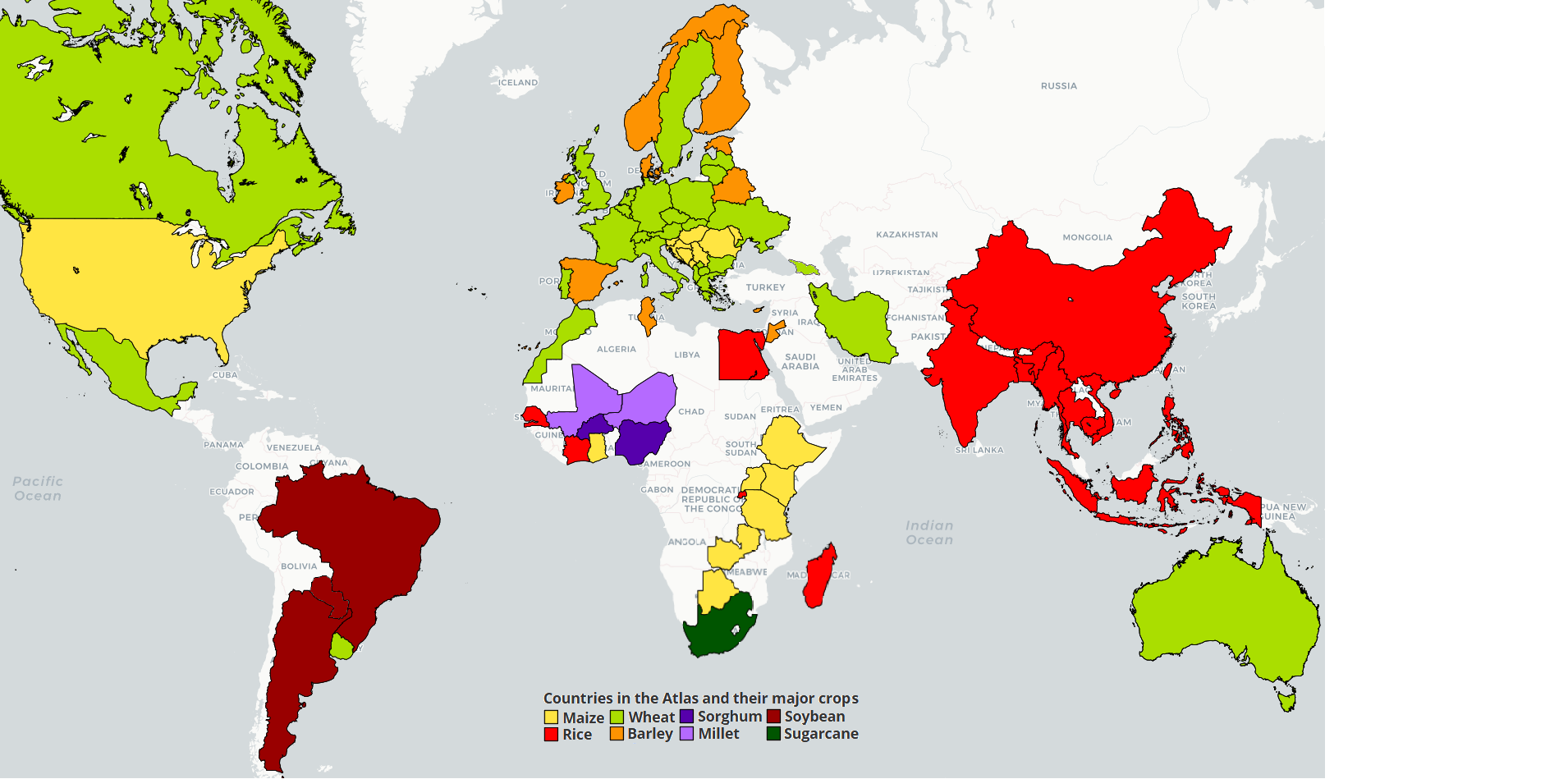 Rwanda
Rwanda
Rwanda is a landlocked country in the Great Lakes region of Central/Eastern Africa, dominated by highlands (the lowest point is at 950 m above the sea level), and one of highest populated countries in Sub Saharan Africa1). Rwanda has a temperate tropical highland climate. The total population in Rwanda was estimated at 12.2 million people in 2017. Agriculture is the main economic activity in Rwanda with 66% of the population engaged in the sector (2017)2). Tea and coffee are the major exports while plantains, cassava, potatoes, sweet potatoes, maize and beans are the most productive crops. Agricultural production statistics on selected crops are shown in below Table (2016)4). Due to its hilly terrain and topography, it is estimated that 90% of domestic cropland is on slopes under rainfed conditions. However, rice is grown mostly in inland valley swamps referred to as marshlands with irrigation. The agricultural sector is challenged by land constraints due to population pressure, poor water management, small average land holdings, lack of public and private capacity, and limited commercialization constrained by poor access to output and financial markets5).
|
| Area harvested (ha) | Yield (t/ha) | Production (t) |
| Beans, dry | 513,137 | 0.9 | 437,673 |
| Bananas | 322,009 | 9.4 | 3,037,962 |
| Maize | 237,658 | 1.6 | 374,267 |
| Cassava | 205,661 | 17.2 | 3,537,566 |
| Sorghum | 165,812 | 1.0 | 163,832 |
| Sweet potatoes | 135,575 | 6.8 | 919,123 |
| Potatoes | 106,236 | 7.1 | 751,284 |
| Wheat | 36,358 | 2.3 | 83,764 |
| Rice, paddy | 33,430 | 3.3 | 110,544 |
Reference
- https://riceforafrica.net/old-site/images/stories/PDF/rwanda_revised_aug2013.pdf
- https://tradingeconomics.com/rwanda/arable-land-hectares-wb-data.html
- https://www.fao.org/rwanda/fao-in-rwanda/rwanda-at-a-glance/en/
- https://www.fao.org/faostat/en/
- https://www.worldbank.org/en/results/2013/01/23/agricultural-development-in-rwanda
Get access to the Atlas for advanced users
Download GYGA results
 | Please read the license information in case you are interested in using the data from the Global Yield Gap Atlas. |
| read more>> |

